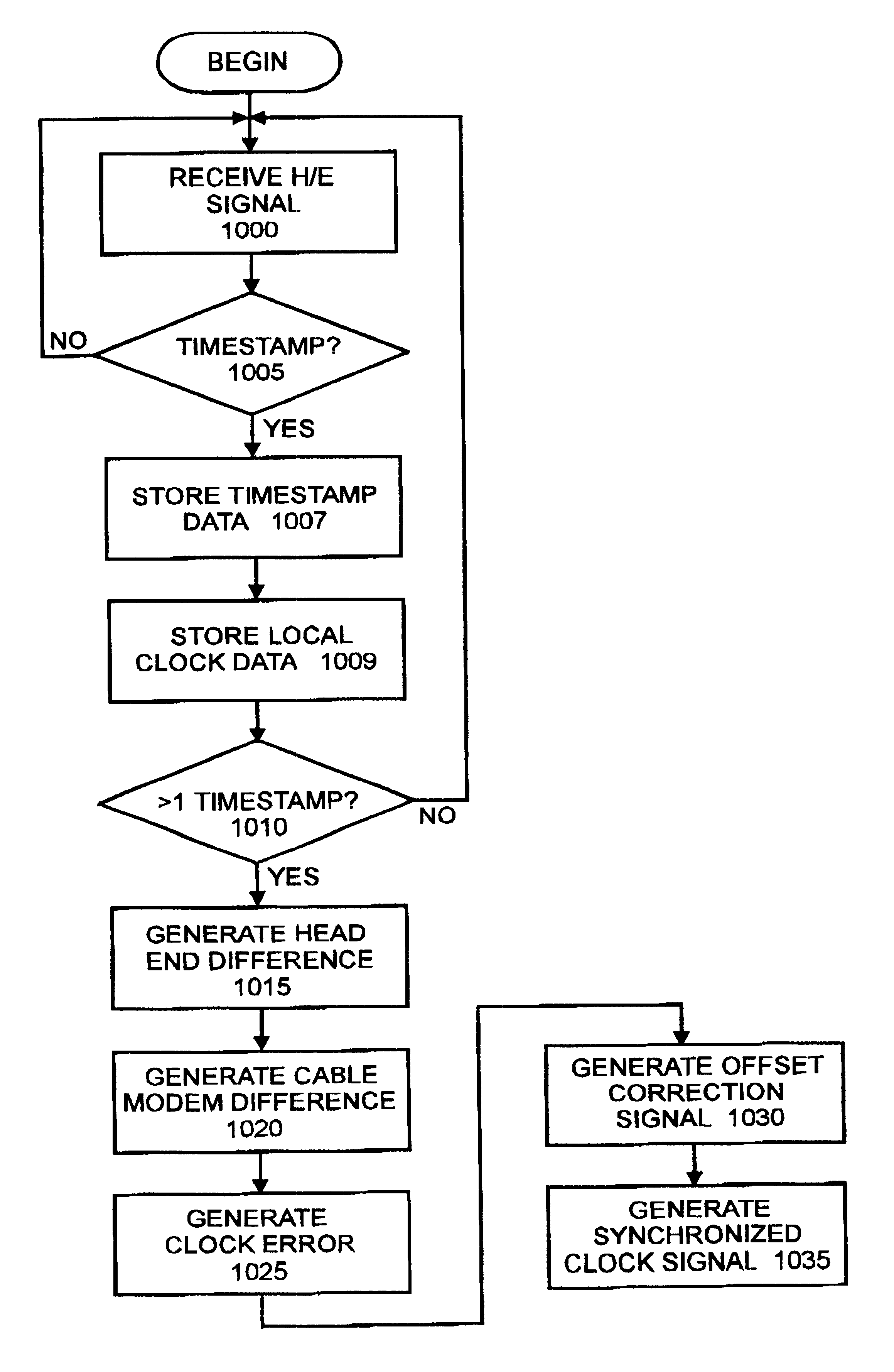Method and apparatus for time synchronization in a communication system
a communication system and time synchronization technology, applied in the field of communication systems, can solve the problems of slow crystal response, many seconds or even minutes, and increase the difficulty of synchronizing time,
- Summary
- Abstract
- Description
- Claims
- Application Information
AI Technical Summary
Benefits of technology
Problems solved by technology
Method used
Image
Examples
Embodiment Construction
This invention avoids the analog approach of the VCXO entirely. For, in one embodiment the present invention synchronizes the clock of a local cable modem with that of the headend by following the basic method described below. Two successive timestamps are taken from the headend and compared to two local time samples from the local cable modem clock. These 4 measurements are used to compute an offset frequency that can be added or subtracted from the local clock to derive a new local clock frequency that is in perfect synchronization with the Headend. This is all done digitally, thus avoiding any non-idealities connected with analog hardware. Furthermore, no modification is required on the relatively inexpensive basic crystal oscillator typically used in cable modems. In one embodiment, the basic concept employs an architecture based on a numerically-controlled oscillator (NCO), of the type employed in direct-digital synthesizers (DDS). This concept is explained more fully below in ...
PUM
 Login to View More
Login to View More Abstract
Description
Claims
Application Information
 Login to View More
Login to View More - R&D
- Intellectual Property
- Life Sciences
- Materials
- Tech Scout
- Unparalleled Data Quality
- Higher Quality Content
- 60% Fewer Hallucinations
Browse by: Latest US Patents, China's latest patents, Technical Efficacy Thesaurus, Application Domain, Technology Topic, Popular Technical Reports.
© 2025 PatSnap. All rights reserved.Legal|Privacy policy|Modern Slavery Act Transparency Statement|Sitemap|About US| Contact US: help@patsnap.com



